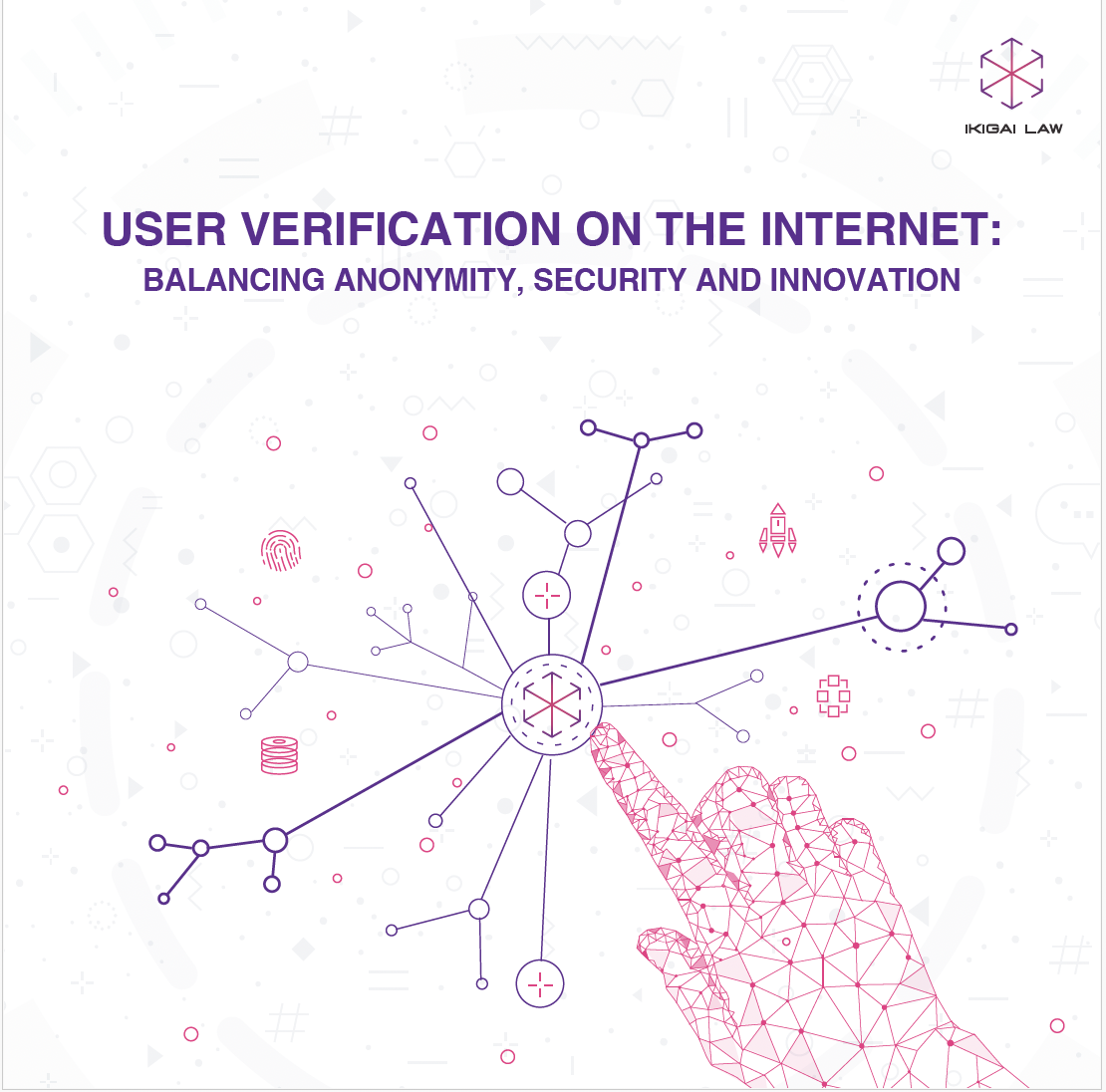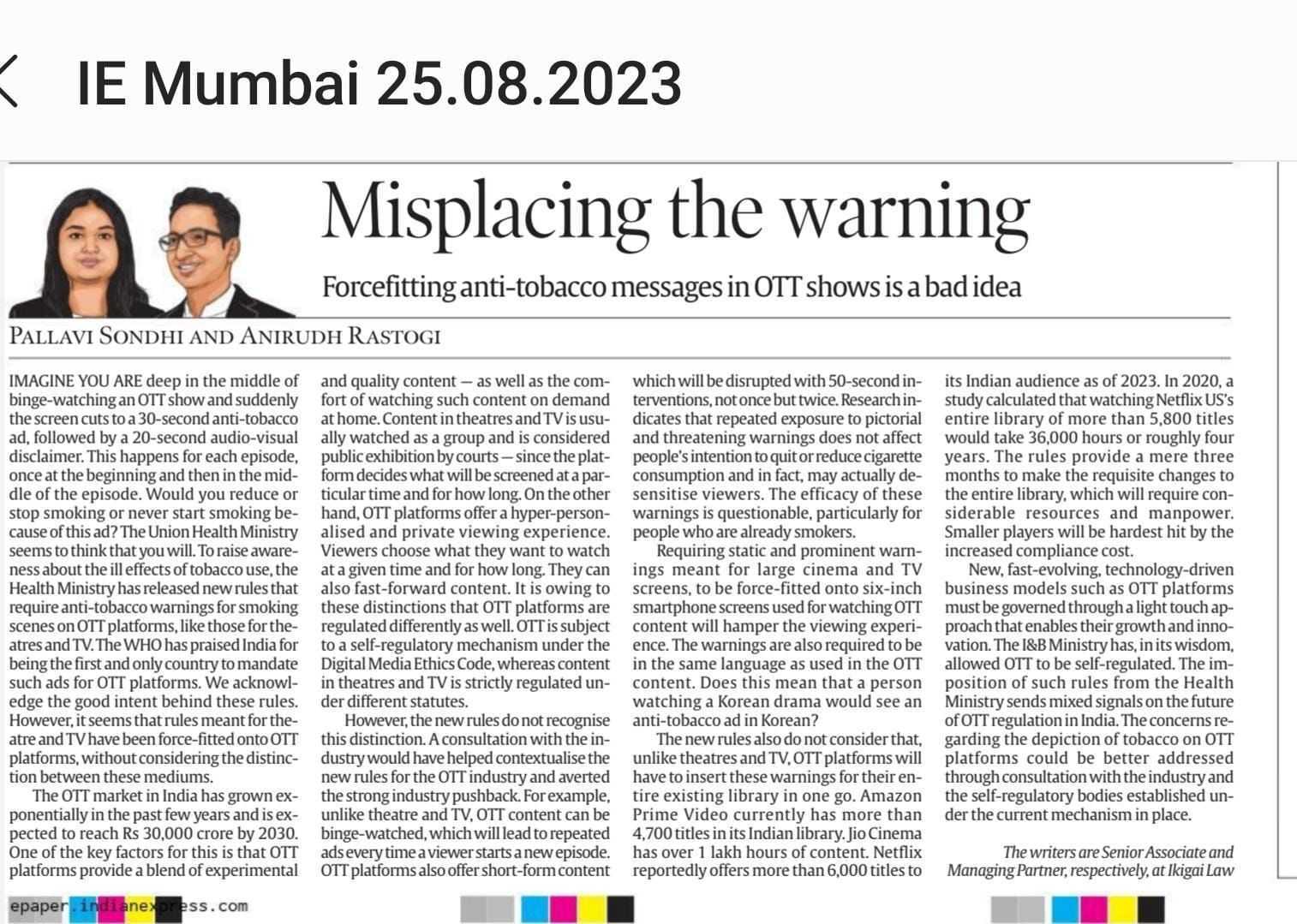This post examines the changes brought by the Geospatial Guidelines, 2021, and what they mean for industries relying on the use of geospatial/digital mapping data. You can also read our comments on the draft National Geospatial Policy 2021 here.
Introduction:
Better maps have been touted as the key to unlocking India’s digital economy[1], and according to the Minister of Science and Technology, the recently launched Geospatial Guidelines have the potential to enable an INR 1 lakh crore rupees[2] industry in India. This post examines the Geospatial Guidelines and highlights the key implications of this policy on opening up the otherwise restricted industries dependent on mapping data.
Overview of existing mapping regulations in India:
In the past, regulation of mapping data has largely been about restricting the power to make maps and licensing their use from a government agency.
For example, the National Map Policy, 2005 (“Map Policy”) gave these powers to the Survey of India[3]. The Survey of India maintains the National Topographic Database (“NTDB”); which formed the basis of all geospatial activity in India[4]. The Map Policy defined two kinds of maps- Defense Series Maps and Open Series Maps[5]. Defense Series Maps are classified maps created and monitored by the Ministry of Defense (“MoD”). Open Series Maps are made by the Survey of India to help with developmental activities. Open Series Maps[6], including general location data (e.g., latitudinal and longitudinal location of places), communications/roads, administrative boundaries (e.g., boundaries of villages), hydrology (e.g., canals and waterways), vegetation, forestry, transmission lines, relief/hypsography (e.g., contours, formations), and settlement and cultural details (e.g., villages, religious places).
Entities seeking access to Open Series Maps required a one-time clearance from the MoD[7]. The Survey of India licenses the use of digital maps to interested entities[8]. Additionally, the Map Policy prohibited the export of all maps/digital data in 1: 250K and larger scales through any means[9].
After the Map Policy, a Civil Aviation Requirement was released in 2010. It required entities undertaking aerial photography/geophysical surveys[10] and cloud seeding[11] to get prior approval from the Directorate General of Civil Aviation, and a no-objection certificate from the MoD.
This was followed by the Remote Sensing Data Policy, 2011[12] of the Department of Space. It was released to harness remote sensing data for development activities and to address national security concerns. The National Remote Sensing Centre were given the power to obtain and disseminate, remote sensing data from foreign and Indian entities[13].
In 2016, a Geospatial Information Regulation Bill, 2016, was introduced by the Ministry of Home Affairs to regulate the use of geospatial information in India[14]. Since this Bill was introduced in the backdrop of the Pathankot attack of 2016,[15] it heavily prioritized national security interests in allowing the use of geospatial information. Under this Bill, the approval of a ‘Security Vetting Authority’ was needed to:
- Acquire geospatial information[16]
- Publish and disseminate geospatial information on internet services and online platforms[17]
- Disseminate, publish and distribute geospatial information outside India.
The Geospatial Guidelines, 2021:
The latest guidelines to regulate the use of geospatial/digital mapping data (“Geospatial Guidelines”) were released by the Department of Science and Technology (‘DST’)[18] on February 15, 2021[19].
The key changes brought by the Geospatial Guidelines include:
- Definitions: Geospatial data has been defined as positional data (i.e., latitudinal and longitudinal data)[20] as images, videos, vectors, voxel, and/or raster datasets or any other type of geospatial dataset, whether in digitized or non-digitized form or web-services[21]. The positional data can include ‘attribute data’, which is any data that gives additional meaning to the positional data[22]. For example, the exact geographic coordinates of a restaurant are positional data, while data on its display board, occupants, and timings are attribute data.
- Removal of licensing/approval requirements: Licensing requirements, like the ones seen in the earlier policies, have been removed[23].
- Thresholds: The ordinary threshold (“threshold value”) for on-site spatial accuracy has been set at 1-meter horizontal resolution and 3-meters for vertical[24]. These thresholds are used to define the scope of permissible activities for Indian and foreign entities under the Geospatial Guidelines, as discussed below in paragraph H. The effect of relying on these thresholds is that the Government has classified geospatial data into – the normal class, which is data that can be collected by anyone, and the controlled class, which is data that can only be collected by certain entities and whose collection is dependent on what the Government allows.
- Considerations for sensitive attribute data: The DST will notify a ‘negative list of sensitive attributes’ (‘sensitive attributes’), after stakeholder consultations. The DST will constitute a Geospatial Data Promotion and Development Committee to manage stakeholder consultations and promote activities under the Geospatial Guidelines[25]. The use and acquisition of attributes in this list would be regulated by the DST[26]. The DST will utilize this list of sensitive attributes to oversee the controlled class of data, by determining who can collect it, and to what extent.
- Handling sensitive attributes: There will be different regulations and threshold limits for data collection for sensitive attributes[27].
- Storage and processing of geospatial data: Geospatial data/maps using data points from the controlled class[28] must be stored and processed in India.
- Export of geospatial data: Geospatial data in the normal class can be ‘exported’ outside India. Sensitive attribute data included in the negative list cannot be exported[29].
- The difference in permissible activities for Indian entities[30] and non-Indian entities:
| Activity | Indian Entity | Non-Indian Entity |
| Acquisition, collection, and use of geospatial data, maps & spatial accuracy (with due consideration for attributes in negative lists)[31]. | Yes | Yes |
| Ground truthing/verification, access to Indian ground stations, and augmentation services for real-time positioning[32]. | Yes | No. However, the non-Indian entity can[33]: – License from Indian Entities only to serve their customers in India. – Access only available through APIs that prevent the passing of Maps/Geospatial Data through Licensee Company or its servers. – Re-use or resale of map data by licensees is prohibited. |
| Terrestrial Mobile Mapping survey, Street View survey, and surveying in Indian territorial waters[34]. | Yes | No. However, the non-Indian entity can[35]: – License from Indian Entities only to serve their customers in India. – Access only available through APIs that prevent the passing of Maps/Geospatial Data through Licensee Company or its servers. – Re-use or resale of map data by licensees is prohibited. |
| Own/create maps, geospatial data of any value finer than the threshold[36](controlled class). | Yes | No. However, the non-Indian entity can[37]: – License from Indian Entities only to serve their customers in India. – Access only available through APIs that prevent the passing of Maps/Geospatial Data through Licensee Company or its servers. – Re-use or resale of map data by licensees is prohibited. |
Implications of the Geospatial Guidelines on Industries relying on map technology:
A. Implications on the use of mapping technology in India:
There has been a shift in the approach to regulating access to geospatial data, from a how approach to a what approach. This means that the Government will no longer regulate how interested entities can access geospatial data, but what classes of geospatial data they can access and in what scenarios. This decentralized approach is more dynamic and will help account for the use of technology as it advances in its capabilities. The negative list on sensitive attributes can be updated periodically, based on factors such as technological advancements.
Remote sensing technologies today are highly sophisticated. They can involve a drone taking numerous high-resolution photos of an area and aggregating them to create a 3D map of the area. Better accuracy can enable access to information such as the precise volume analysis of a body of water[38]. This is where the Geospatial Guidelines play an interesting role. By relying on a list of sensitive attributes, the DST will regulate what geospatial data can be captured and used, as opposed to regulating whether geospatial data can be captured and used at all. This means that the Geospatial Guidelines can impact the level of detail of the maps produced by a non-Indian entity, if they don’t partner with an Indian entity.
However, the use of sensitive attributes with different thresholds and regulations may not impact commercial operations. Thresholds and regulations of sensitive attributes will impact the levels of detail a map can have. In an interview, Ashutosh Sharma, Secretary, DST, indicated that the negative list will not be longer than necessary and that the list would not exclude sensitive areas, merely some of its attributes. So, the area itself will be visible on the map but not closely identifiable[39].
B. Implications on business operations:
It is hard to imagine food aggregators and e-marketplace delivery services needing maps with details such as the precise volume analysis of a body of water. However, Indian entities can still have such detail if they meet the criteria provided by the DST. Non-Indian entities can continue using their mapping technologies through appropriate arrangements with Indian entities to serve Indian users by using APIs.
A list of sensitive attributes and their respective thresholds and regulations can help protect defense and national security interests as well. For example, in the United States, the Geospatial Data Act, 2018, explicitly mentions that geospatial data will exclude ‘classified data’, which is data inaccessible to the public as decided by the relevant US government departments. This includes the Department of Energy and Department of Defense, among others[40]. The recently released Geospatial Guidelines suggest a more nuanced approach to this challenge, as demonstrated by the DST Secretary’s statements. Sensitive areas will be visible on maps with variance in the level of detail.
This “how” not “what” approach of the Geospatial Guidelines also means that different maps will be used by different sectors. The maps used by logistics and e-commerce platforms, for example, will differ from the maps used by ocean exploration and mining because the threshold levels of the sensitive attributes could be differently notified across these sectors. Ocean exploration and mining require more accurate and vivid imaging and mapping, whereas logistics and e-commerce may not require such accuracy.
C. Implications on data protection:
Geospatial mapping is a large data-gathering exercise whose precision depends on the quality of technology used and the intended use of the data points slated for collection. It almost harkens Orwellian Big Brother images and the Cold War-era spy satellite surveillance stories, resulting in data protection concerns. The sophistication of the technology will determine just how much data belonging to human beings and their daily living is collected. Other countries have also faced this conundrum, with Germany even banning Google Street View because of privacy concerns[41]. On the contrary, the European Union regulates geospatial data as a public good and high-value data set[42].
India is currently in the process of finalizing its personal data protection law. A committee appointed by the Indian government has also proposed a framework to govern non-personal data. Depending on whether it qualifies as personal data (for example, in the case of an individual’s address) or non-personal data (for example, a map depicting the forest cover of a specific region in India), geospatial data could also be subject to additional data-specific regulations in India.
The Geospatial Guidelines briefly address data privacy concerns by mandating that geospatial data that is of finer value than the prescribed thresholds, be stored in India; and by ensuring that this finer value geospatial data only be collected by Indian entities. However, entities can export geospatial data that is within the threshold (‘normal class’) and excludes sensitive attributes. Ensuring privacy in the case of exportation will determine largely on the sensitive attributes list, their thresholds, and regulations.
Conclusion:
The
Geospatial Guidelines are a policy shift from the licensing-based regulation of
the use of geospatial data, to the regulation of what geospatial data
can be used not how; the aim being to boost map-reliant commercial
operations in India. The Geospatial Guidelines match statements made by various
Government officials on this goal, enabling safe use of geospatial technology, and
taking into consideration data protection and national security.
This article has been authored by Shambhavi Ravishankar, Associate, Ikigai Law and Arpit Gupta, Senior Associate, Ikigai Law with inputs from Anirudh Rastogi, Managing and Founding Partner at Ikigai Law.
For more on the topic, please get in touch at contact@ikigailaw.com
Image Credits: Freepix
[1] https://www.financialexpress.com/industry/sme/mapping-policy-we-wont-have-to-depend-on-google-maps-says-mohandas-pai-as-govt-puts-startups-on-the-map/2195316/
[2] https://economictimes.indiatimes.com/news/economy/policy/sweeping-changes-in-indias-geospatial-data-policy-to-unlock-value-of-rs-1-lakh-crore/unlocking-rs-1-lakh-crore/slideshow/81049416.cms
[3] Para 1, National Map Policy, 2005 (Available at: https://surveyofindia.gov.in/documents/national-map-policy.pdf)
[4] Para 2, National Map Policy, 2005
[5] Para 3, National Map Policy, 2005 (available at: https://surveyofindia.gov.in/documents/national-map-policy.pdf)
[6] Para 2(c), Guidelines for Implementing National Map Policy, 2005 (available: https://www.surveyofindia.gov.in/files/nmp/Guidlines%20for%20Implementing%20National%20Map%20policy.pdf)
[7] Para 3(a), National Map Policy, 2005 (available at: https://surveyofindia.gov.in/documents/national-map-policy.pdf)
[8] Para 4, Guidelines for Implementing National Map Policy, 2005 at p. 2
[9] Para 2(d), Guidelines for Implementing National Map Policy, 2005
[10] Para 6, Office of the Director General of Civil Aviation, Civil Aviation Requirement: Requirements for Issue of Non-Scheduled Flight Clearances and Enrolment of a Flight Clearance Agency, October 12, 2010 [F. No. 14015/gen/2006-at1] (Available at: http://164.100.60.133/misc/draft%20cars/D3F-F1(Draft_Sept2017).pdf)
[11] Para 7, Office of the Director General of Civil Aviation, Civil Aviation Requirement: Requirements for Issue of Non-Scheduled Flight Clearances and Enrolment of a Flight Clearance Agency, October 12, 2010 [F. No. 14015/gen/2006-at1] (Available at: http://164.100.60.133/misc/draft%20cars/D3F-F1(Draft_Sept2017).pdf)
[12] Remote Sensing Data Policy, 2011 (Available at: https://www.isro.gov.in/indias-space-policy-0)
[13] Para 2(b), Remote Sensing Data Policy, 2011 (Available at: https://www.isro.gov.in/indias-space-policy-0)
[14] Draft Geospatial Information Regulation Bill, 2016 – “A Bill to regulate the acquisition, dissemination, publication and distribution of geospatial information of India which is likely to affect the security, sovereignty and integrity of India” (available at: https://www.prsindia.org/uploads/media/draft/Draft%20Geospatial%20Bill,%202016.pdf).
[15] https://thewire.in/government/controversial-geospatial-bill-snowballed-shoved-cold-storage
[16] Clause 3, Draft Geospatial Information Regulation Bill, 2016,
[17] Clause 4, Draft Geospatial Information Regulation Bill, 2016,
[18] The Government of India (Allocation of Business) Rules, 1961 at p.146 – The Department of Science and Technology (DST) has powers to regulate geographical information systems, the national spatial data infrastructure. (Available at: https://cabsec.gov.in/writereaddata/allocationbusinessrule/completeaobrules/english/1_Upload_2724.pdf)
[19] Guidelines for acquiring and producing Geospatial Data and Geospatial Data Services including Maps, F.No.SM/25/02/2020 (Part-I) dated 15th February, 2021 (available at: https://dst.gov.in/sites/default/files/Final%20Approved%20Guidelines%20on%20Geospatial%20Data.pdf
[20] Paras 7(a): “Latitude, longitude and elevation/depth of a point or its x, y & z co-ordinates in the territory of the Republic of India.”, Geospatial Guidelines, 2021
[21] Para 7(c), Geospatial Guidelines, 2021
[22] Para 7(b), Geospatial Guidelines, 2021
[23] Para 8(ii)(1), Geospatial Guidelines, 2021
[24] Para 8(iv)(a)(1), Geospatial Guidelines, 2021: 1. On-site spatial accuracy shall be one meter for horizontal or Planimetry and three meters for vertical or Elevation. 2. Gravity anomaly shall be 1 milli-gal. 3. Vertical accuracy of Bathymetric data in Territorial Waters shall be 10 meters for up to 500 meters from the shore-line and 100 meters beyond that.
[25] Para 8(iii)(c), Geospatial Guidelines, 2021
[26] Para 8(iii)(a), Geospatial Guidelines, 2021
[27] Para 8(iv)(a), Geospatial Guidelines, 2021
[28] Para 8(ix), Geospatial Guidelines, 2021
[29] Para 8(x) Geospatial Guidelines, 2021
[30] Para 7(f), Geospatial Guidelines, 2021: “Any Indian citizen, Government entities, Societies registered under applicable statutes, statutory bodies, Autonomous Institutions of the Government, or any Indian company or Indian LLP owned by resident Indian citizens or any Indian company or Indian LLP controlled by resident Indian citizens (as defined in the Explanation to Rule 23 of the Foreign Exchange Management (Non-Debt Instrument) Rules, 2019).”
[31] Para 8(v), Geospatial Guidelines, 2021
[32] Para 8(vi)(a), Geospatial Guidelines, 2021
[33] Para 8(viii), Geospatial Guidelines, 2021
[34] Para 8(b), Geospatial Guidelines, 2021
[35] Para 8(viii), Geospatial Guidelines, 2021
[36] Para 8(vii), Geospatial Guidelines, 2021
[37] Para 8(viii), Geospatial Guidelines, 2021
[38] https://wingtra.com/drone-photogrammetry-vs-lidar/
[39] https://economictimes.indiatimes.com/news/economy/policy/we-have-not-restricted-anyone-from-procuring-what-is-easily-available-ashutosh-sharma/articleshow/81128238.cms
[40] Geospatial Data Act, 2018, https://www.fgdc.gov/gda/43-usc-ch-46-geospatial-data-geospatial-data-act.pdf
[41] https://bigthink.com/strange-maps/germany-street-view
[42] EU Directive – “On open data and the re-use of public sector information”, DIRECTIVE (EU) 2019/1024 OF THE EUROPEAN PARLIAMENT AND OF THE COUNCIL of 20 June 2019, (available at: https://eur-lex.europa.eu/legal-content/EN/TXT/HTML/?uri=CELEX:32019L1024&from=EN#d1e1259-56-1)










